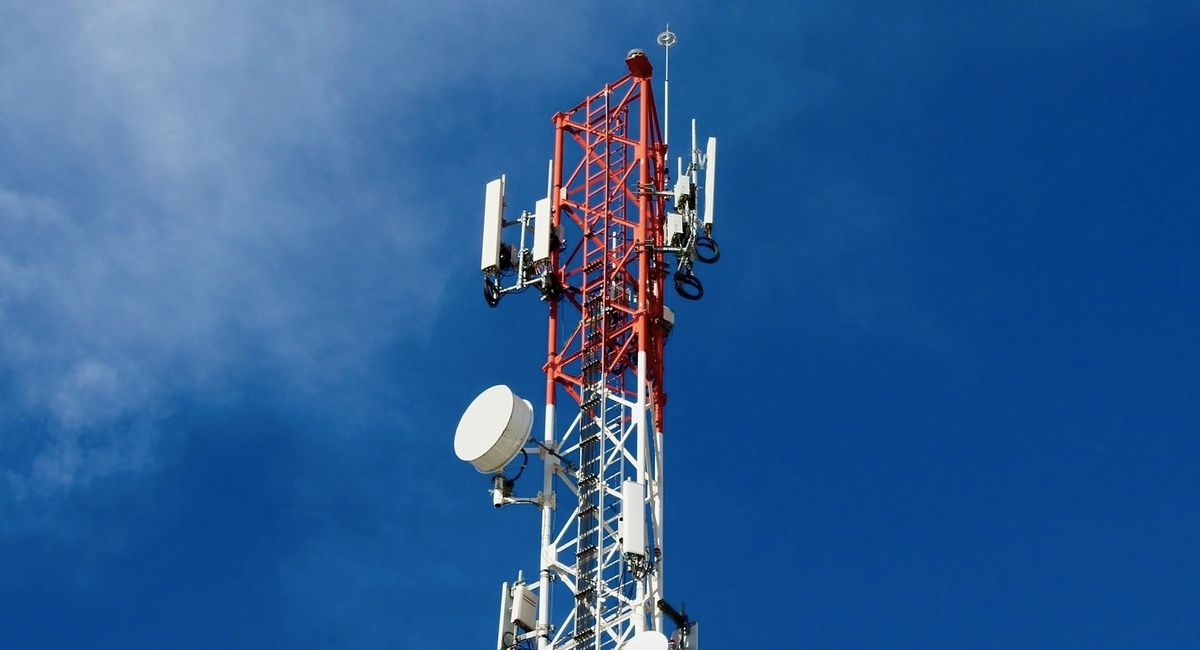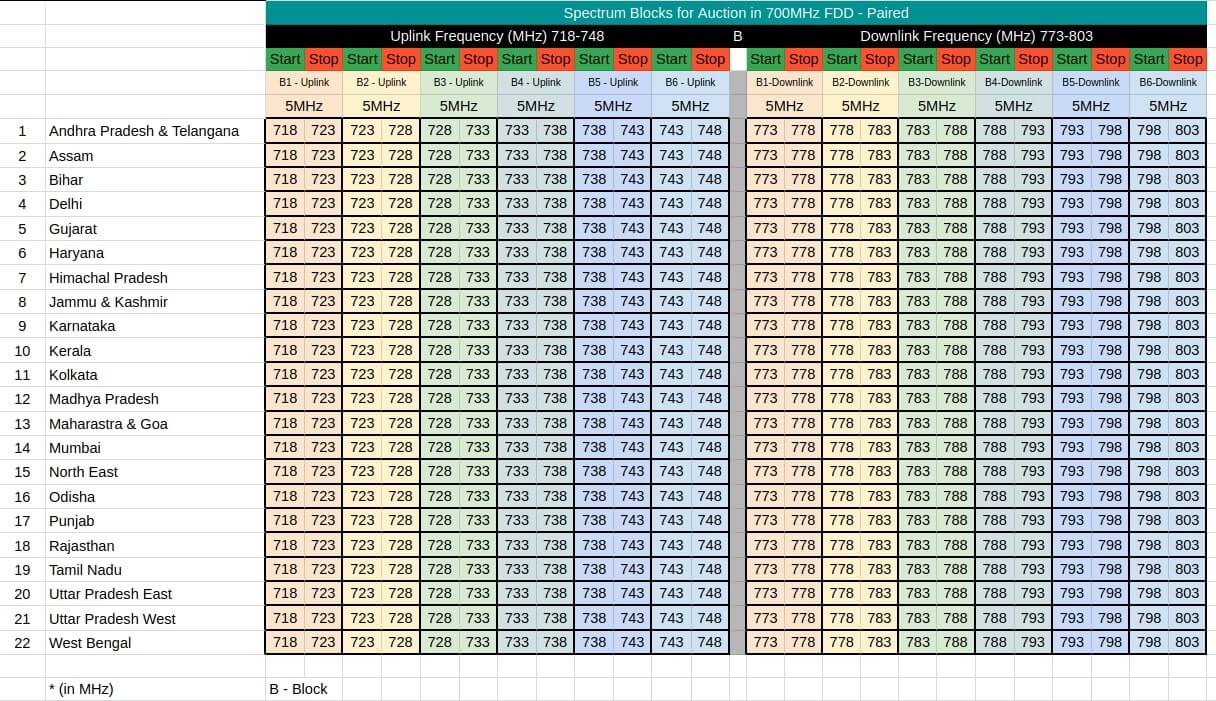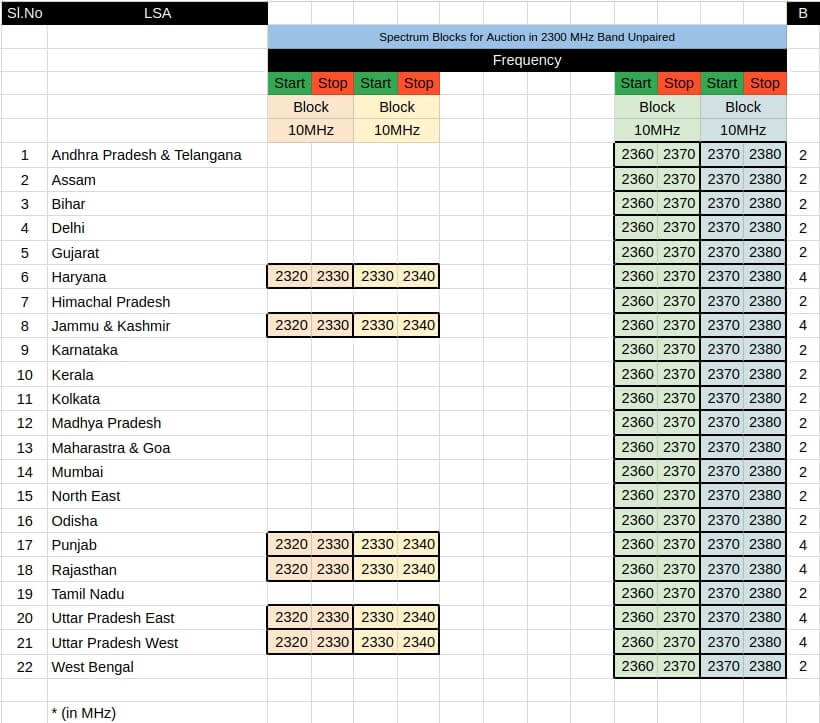As we already know, the Indian government will hold the next round of spectrum auction from March 1, 2021, the Department of Telecommunications (DoT) has put airwaves in 700 MHz, 800 MHz, 900 MHz, 1800 MHz, 2100 MHz, 2300 MHz, and 2500 MHz bands in the auction. Today we will try to explain in layman’s terms about the spectrum configuration. Spectrum is not a physical instrument or technology; it is just an imaginary medium, which cannot be touched or felt, to facilitate communications services. Unless put to the imagination and presented in a resourceful manner, understanding spectrum lies between the thin lines of technology and business aspects. Spectrum terminology is something which needs a lot of visual perception and in this analysis, we tried to decode and present it in the simplest manner possible.
What is Spectrum Configuration all About?
Since Spectrum is an intangible resource, the International bodies identify it using standards by allocating specific numbers. India has a National Frequency Allocation Plan (NFAP), which defines the allocations, assignments, to use the spectrum for different services and industries and for effective utilization of spectrum as per the set standards globally. We mentioned in our previous article about how spectrum is sold in blocks, whenever we refer to a block, it simply refers to the address and property of the spectrum that is sold. Among the many and vast numbers in the spectrum portfolio, the block which is being sold to a telco can only be referred or identified using this configuration.
Understanding Paired Spectrum Block
The spectrum which is auctioned is sold as ‘Paired’ - FDD and ‘Unpaired - TDD. Let’s understand what is paired spectrum taking a block of 700 MHz bands as an example. Band : 700MHz (Uplink - 703-748 MHz = 45MHz) (Downlink - 758-803 MHz = 45MHz) Type: Paired Spectrum, FDD (Frequency Division Duplexing) Total Frequency: 45MHz Frequency Allocated to departments (non-commercial purposes such as Defence, Railways): 15MHz Frequency put for Auction: 30MHz (for commercial telecom services) which means 30MHz in the Uplink and 30MHz in the downlink frequency. This is where the paired spectrum comes into the picture. Paired: Uplink channel + downlink channel. So for example, if the telco ‘A’ wins one (first block of the spectrum) block (5MHz) of spectrum in the 700 MHz band, it will mean the telco is assigned 718-723 MHz (5 MHz) in uplink frequency paired with 773-778 MHz (5 MHz) in downlink frequency. Thus the telco would be able to use the 5 MHz for uplink and 5 MHz for downlink purposes, 10MHz in total. Hence it is called a paired spectrum due to this configuration where a block of spectrum in a lower frequency band and an associated block of spectrum in an upper-frequency band are used together. Here in the 700MHz FDD band, the spectrum is divided into uplink channel and downlink channel by dividing the frequency. In technical terms, Frequency Division duplexing is a technique where the transmitter/uplink and receiver/downlink operate at different carrier frequencies.
Understanding Unpaired Spectrum Block
For understanding what unpaired spectrum block is, we will be taking the 2300 MHz band for example. Band : 2300MHz (Frequency : 2300-2400 MHz = 100MHz) Total Frequency: 100MHz Type: Unpaired Spectrum, TDD (Time Division Duplexing) Frequency allocated to departments(non-commercial purposes such as Defence: 20MHz Frequency put for Auction: 20MHz to 40MHz (vary with circle/LSA) as TSPs already hold 40 to 60 MHz of spectrum for commercial operations and only the balance spectrum is put for auction. Let us take Andhra Pradesh Circle: only 20MHz (2 Blocks each of 10MHz) is available and hence put for auction as 20MHz is used for Defence and two telcos already hold 60MHz, 30MHz each. Total 100MHz = 20MHz [Auction 2021] + 20MHz [MOD] + 30MHz [TSP1] + 30MHz [TSP2] To understand this, let us say telco ‘B’ won one block of spectrum in 2300 band (10 MHz) in Andhra Pradesh circle. It would mean that the telco is assigned 2360-2370 MHz = 10 MHz unpaired spectrum. The telco can use this 10 MHz spectrum for both uplink and downlink purposes. Thus, a single frequency band is used for transmitting/uplink and receiving/downlink; a technique where the frequency is used by sharing and assigning alternate time slots for transmitting and receiving signals. Hence it is called unpaired spectrum and Time Division Duplexing (TDD). FDD Bands : 700MHz, 800MHz, 900MHz, 1800MHz, 2100MHz TDD Bands: 2300MHz, 2500MHz So, spectrum configuration gives us an idea about the frequency, band plan, block size and basically an address and specification to identify the characteristics of the spectrum block being auctioned from an imaginary spectrum pool.
Spectrum Configuration put for Auction and Spectrum CAP:
You can find the details of above-used spectrum blocks and spectrum holdings and CAP details (Sub Ghz, TDD, FDD) on the India Spectrum Holding Timeline 2021 in the spectrum configuration tab and snapshot view tabs respectively.



